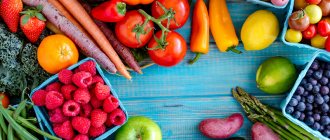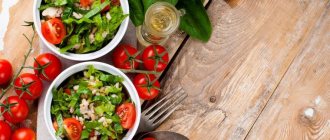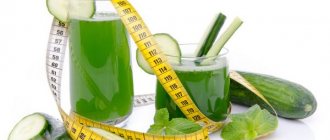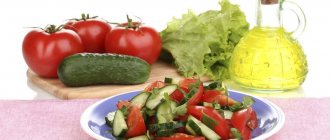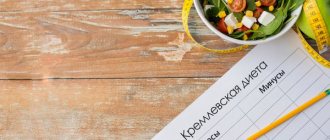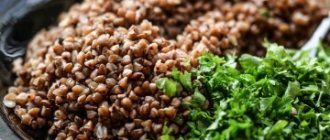Over the past 20 years, there has been a constant increase in body weight among men and women. Often, excess weight is the cause of many diseases. These include diabetes mellitus, dysfunction of the cardiovascular system, as well as a number of cancer diseases.
Being healthy is not difficult at all. To do this, you need to monitor your diet and give preference to healthy foods. You can independently develop a proper nutrition system for a month or for a longer period of time. But it is important that the food is balanced.
We eat fractionally - how and why
The usual diet contains a maximum of 3 parts - breakfast, lunch and dinner. In the realities of a fast pace of life, their number is reduced to 1-2, but the amount eaten at one time increases significantly. In the morning, a person who wants to lose weight, but is hungry, pounces on food and comes to his senses when everything that was on the table has already been consumed. But the food is digested and by nightfall you want to eat again, so you have to look in the refrigerator and eat before going to bed.
Switching to a different lifestyle means eating 6-8 times a day in minimal portions. In addition, you will not have time to feel hungry, because the interval between meals will be only 2-2.5 hours. The desire to fill your stomach will not have time to form, so not much will be eaten.
The fractional meal menu for each day must be compiled correctly, preferably according to the recommendations of a specialist. In the morning you need to eat carbohydrates, and in the evening - preferably only light proteins.
Our additional services: Bioimpedance | Marutaka Massage | Pressotherapy | Ion-Detox
Nutritionist's comment:
This approach to eating helps you lose excess weight, speeds up your metabolism and increases your calorie expenditure throughout the day. The basis is the thermogenic effect - when we eat more often, we spend the consumed calories on processing and assimilation of food. If you take frequent portions of energy, much more energy will be spent on their absorption. But it is important to control your condition and be aware of possible disorders in the body due to severe changes. Sometimes, without supervision, a person’s functions of certain organs are inhibited, metabolism or the functioning of the body is disrupted. It is necessary to change the regimen scheme in time or abandon it.
Basics of proper nutrition for women over 40 years old
The basics of proper nutrition for women over 40 years old include a standard set of criteria specific to PN:
- Not to starve.
- Products must contain the elements necessary to maintain health.
- Small meals.
- Portions are small in size.
- Sufficient amount of water per day, about 2 liters.
- Refusal to use medications to lose weight.
A woman should include the following products in her daily menu:
- Veal, beef, rabbit, chicken, turkey meat.
- Beans, peas, lentils.
- Dairy and fermented milk products
- Fish: fatty and low-fat varieties.
- Cereals: buckwheat, barley, corn, millet, rice.
- Raspberries, strawberries, red and black currants.
- Kiwis, oranges, tangerines, cherries, apples, pears, plums, apricots.
- Cabbage, cucumbers, tomatoes, broccoli, sweet peppers, spinach.
- Greens: dill, parsley, cilantro.
There is no need to completely give up sweet foods. A small piece of dark chocolate or low-calorie cookies will not cause harm, but the lack of sweets can lead to a depressive mood.
Some foods should be excluded from the menu or their consumption significantly reduced:
- Alcoholic drinks . They remove fluid from cells and tissues, causing an attack of uncontrolled eating. It is advisable to limit yourself to dry wine.
- Coffee . Negatively affects the cardiovascular system of mature women. It is necessary to limit the consumption of the drink to 1 cup per day.
- Salt . Prevents the removal of water from tissues, which leads to swelling. The daily norm is up to 20 g.
- Potato . Contains a lot of calories and starch. It is allowed to be eaten only in the first half of the day.
After 40 years of age, a woman’s body develops a deficiency of certain nutrients. In particular, the lack of iron and potassium, which must be replenished with food. Iron is found in meat, lentils and rice, cabbage and broccoli. You should include almonds and dates in your diet, but not more than 50 g per day - such products are very high in calories.
Calcium is the second element, the deficiency of which is most often observed in women after 40. To provide the body with the element, 1200-1400 mg of calcium per day is necessary. The mineral is found in fish, meat and dairy products (mainly milk and cheese).
Also, after 40 years, the female body needs vitamins:
- vitamin A (retinol),
- vitamin B,
- vitamin C (ascorbic acid).
The condition of the skin, cartilage and bone tissue depends on vitamin A. To keep your skin elastic and healthy, you must include meat, eggs and fish in your diet, as well as foods rich in carotene. Carotene is sufficiently contained in carrots, pumpkin, apricots, parsley and bell peppers.
Vitamin C affects metabolic rate and overall immune function.
This element enters the diet along with vegetables, fruits and berries. Vitamin B promotes the breakdown of fats and prevents its accumulation. It is found in meat, fish and seaweed. A lack of this substance causes a feeling of fatigue and poor health.
Features of fractional meals
If someone sits down to have a snack 2 times a day, then the period of fasting is on average up to 8 hours, and there is often no breakfast at all. If the regime is not followed, a strong feeling of hunger appears, it is difficult to suppress it immediately, so more food is absorbed than necessary. A system in which the required amount of food is divided into 6-8 times is beneficial in many respects. You will have to eat in small portions, ideally smaller than your own fist, but this will be enough, because in 2-2.5 hours there will be another snack.
There are 3 ways to stick to this diet:
- look in the refrigerator every time you feel slightly hungry;
- eat well 5-6 times in small portions;
- Have light snacks every 2-3 hours.
In the first case, you need to eat very little, just to satisfy the feeling an apple is enough and after 15 minutes a banana. This method has a lot of disadvantages: it is difficult to create a menu, eating becomes chaotic, and the desire to eat normally becomes obsessive. For some who used this approach, the day turned into constant chewing. The gastrointestinal tract is overloaded, the entire system malfunctions.
If you divide the total amount of daily food by equal 5-6 times, then the benefits will be much greater. It is only important not to allow a gap more serious than 4 periods of fasting between snacks. This method allows you to receive a regular amount of necessary calories and microelements, and also avoids overeating. Gradually the stomach decreases in size.
The third method consists of 8-10 equal servings with similar calorie content. The size of what you eat at a time does not exceed a glass. Hunger almost never comes, the percentage of fat decreases, as part of the diet, fractional meals are a varied menu for the week.
What is the essence of the technique?
When a person eats in small portions, he does not have time to form the desire to empty the refrigerator, he is saturated with small portions. Gradually, the daily calorie intake decreases to 1200-1600 kcal; when the norm is met, the stomach becomes several times smaller. This approach eliminates the possibility of gaining weight.
It is necessary to strictly control the ratio of microelements, carbohydrates, fats and proteins.
Nutritionist's comment:
Switching to a similar style of food consumption really allows you to lose about 10 kg in six months. But it is important to be observed by a specialist who will monitor the process and monitor health indicators. If you experience nausea, vomiting, cramps or pain in the gastrointestinal tract, changes in blood pressure or sugar levels, strange discharge or bleeding, this is a reason to urgently consult a doctor.
Basic Rules:
- After waking up, you need to drink a glass of water 20-30 minutes before breakfast. This will prepare the gastrointestinal tract for productive work and strengthen metabolism.
- Remove harmful products. It is better not to buy or prepare baked goods, sweet, spicy, fried and fatty foods, give up fast food and chips with crackers.
- You can’t go hungry, otherwise there can be no question of any beneficial effect.
- A little trick - place plates on the table that are smaller than usual in size.
- Control the BZHU consumed.
- Every 2 weeks you need to adjust the plan, tracking results and changes.
- Light workouts or yoga will speed up weight loss and add tone to your life.
It is important to control BJU for a balanced diet in the following ratios: 25% proteins, 30% fats and 45% carbohydrates - this is the most optimal and rational formula for a healthy diet.
How to lose weight in just 30 days
Spring will come very soon, which means it’s time to get yourself in order after the extra pounds accumulated over the winter. However, it often happens that heat comes suddenly and without warning, and you can’t fit into old things. What to do in this case? You need to lose excess weight without harm to your health. This can be done even in 30 days - the main thing is to muster your willpower.
To lose 5 kilograms or more in just a month, you don’t have to exhaust yourself with terrible diets and the gym. The instructions were compiled by Lifehacker.
5 rules for losing weight in a month
- Drink 1.5–2 liters of water a day, in addition to tea, coffee, compotes and drinking yoghurt. Start every morning with a glass of clean water. Bring a bottle of water to work and keep it next to you so you don’t forget to drink. In just a few days this will become a habit. But remember that you can drink at least an hour after eating.
- Eliminate sweets, bread, fast food, fatty, fried foods from your diet. It is better to replace all this with fruits, baked dishes and vitamin-rich salads. If you feel really sad without sweets, you can eat a piece of dark chocolate. And yes, only go to the store when you are full. On an empty stomach, you risk being tempted by food that contradicts the principles of proper nutrition.
- Breakfast, lunch and light dinner should be at the same time. Insert small snacks between main meals: protein bars, dried fruits, homemade yogurt, diet bread, low-fat cheese, fruits and vegetables. This way the body will not panic and try to stock up on fats for future use.
- Move. If you do not play sports in specialized clubs, then try to walk every evening and do a certain exercise program at home every other day. Don't stay too long at work. Get up and walk around the office every 20–30 minutes. When you move, the body comes to life, gets rid of excess reserves and is enriched with oxygen.
- Forget about losing weight. Give yourself the mindset that you have switched to a healthy lifestyle that will help you become more perfect. Enjoy the process and maintain a positive attitude. Take a photo, weigh yourself and measure your vital body parameters before starting the course to evaluate the results of your efforts.
However, physical activity is still needed, not only for losing weight, but also to improve your health. These exercises can be performed every other day so that the body has time to recover. The workout is suitable for both women and men.
First, do a warm-up: light running in place, bending your torso to the right and left, squats (10–15 times) and freely swinging your arms.
Then move on to the main workout. At first, each exercise is done in 2-3 sets of 10-20 repetitions. The pause between approaches is no more than two minutes. Gradually the load increases.
Abdominal pumping
1. Classic sit-ups
Starting position: lying on your back. Place your hands behind your head or on your chest. Spread your elbows to the sides. Bend your legs slightly at the knees at an angle of 45–60 degrees and lift them above the floor.
Now start raising your head. Stretch your chin towards your chest. Reach the highest possible point for you and return to the starting position. If it gets difficult, move closer to the sofa and put your feet up on it. Or just bend your legs at an angle of 90 degrees.
2. Side plank
Lie on your side, lean on your elbow. Then lift the body so that you get an absolutely straight line without sagging or protruding parts. At the same time, you should not feel pain, only tension. You need to perform the exercise on each hand in turn.
When performing the plank for the first time, it is recommended to start with short workouts - no longer than 30 seconds. The time must be increased gradually.
3. Crunches
Lie on the floor with your knees slightly bent. Slowly lift your body and begin twisting first in one direction, then in the other. Try to touch your elbow to the opposite knee.
At the bottom point, do not lie completely on your back. Stay two centimeters from the floor. This way you will maintain tension in your muscles and work them more effectively. Be sure to keep your hands behind your head.
4. Boat
Lying on your stomach, lift your chest and extended legs as high as you can. At this time, the hands lie along the body. Then stretch your arms forward and maintain this position for five deep breaths. Place your hands behind your back, grab your ankles and try to rock back and forth a little.
Pumping the buttocks and thighs
1. Pelvic lifts
Lie on your back, bend your knees, and place your arms along your body, palms down. As you exhale, lift your hips up to the maximum possible point (this usually shows strong muscle tension). You need to fixate at this point for a few seconds. Your back should remain straight. As you inhale, slowly return to the starting position.
2. Swing your legs back
Get on your knees and rest your forearms on the floor. The back is straight, slightly arched at the lower back, looking forward. Next, inhale and take one leg back, fixing it at the top point for a few seconds. As you exhale, return to the starting position.
3. Hip adduction
Lie on your right side, rest your right hand on the floor, place your left hand on your waist or on the floor. The right leg is straight, the left is bent at an angle of 90 degrees. Pull the toe of your right foot towards you and lift it to the highest possible point. Then return your leg to its original position. The exercise must be done on both legs.
4. Squats
Stand straight, feet shoulder-width apart, arms extended forward. Slowly start squatting. Lower your buttocks as if there was a chair behind you to sit on, that is, to the level when your thighs are parallel to the floor. Now rise slowly, controlling every movement.
Arm muscle tightening
1. Single leg push-ups
Get on your knees. Get into a prone position with your hands under your upper chest. The distance between the palms should be slightly wider than shoulder width. From the bottom point, begin to lift your body, leaning on your hands and knees, but at the same time keep your leg suspended and pull it up. The abs and buttocks are tense. If it’s difficult, you can do push-ups with your knees bent.
2. Climber
Do a plank. The body should be a kind of straight line, the abs and buttocks should be tense. Bend your right leg at the knee and pull it towards your chest. Press your toe into the floor, then return your leg to the starting position. Repeat the same with the other leg.
Stretching
This block can be modified to include a variety of stretching exercises before and after your workout.
1. Butterfly
Sit on the floor, bend your knees and press one foot to the other. Spread your knees to the sides and place your palms on them. Using gentle pressure, press your knees toward the floor, trying to achieve full contact along the entire outer surface of your legs. Hold for 10-15 seconds and release the pressure.
2. Pharaoh
Sit on the mat, extend your right leg, bend your left leg at the knee and throw it behind your right. Then turn your torso to the left and rest the elbow of your right hand on the knee of your left leg. Hold this position for several seconds.
3. Cat
Get on all fours, hunching as hard as you can. Maintain this position for 15 seconds. Then arch your back and look up. Stay in this position for 15 seconds.
4. Backstroke
Lying on your back with your legs bent, try to touch your chin to your knees and your knees to your chin. At the same time, swing, clasping your legs with your hands. This stretches all parts of the spine.
The exercise is recommended to be done every day. Preferably as many times as you are old.
Perform all exercises consciously. Try to feel how your muscles tense and work. Take your time. If you are tired, allow yourself a 5-minute break, walk around the room, take a sip of clean water and continue your workout.
At the end of classes, take a deep breath and exhale, lie still for a few minutes, and restore your breathing. Smile and praise yourself. Today you have become even more beautiful!
Sample menu for a month
To lose weight in a month, you need to eat small, balanced meals and eat high-quality foods. Don't go hungry under any circumstances, but don't overeat either. To do this, concentrate on the taste of food, its aroma, and consistency. Eat slowly and thoughtfully, without being distracted by the TV, computer or book. This will make you feel full with less food.
Overeating is partly the eating of stress and longing for bright emotions. Try to spend your free time as varied as possible. Meet with friends, remember your favorite hobbies. After a working day, try to relax, take a bath, free your thoughts and concentrate on your loved ones.
We offer eight options for each meal. Combine them, but remember a few rules:
- It is better to eliminate salt from the diet altogether or reduce the amount of salt consumed. Salt retains water, which means it prevents the body from removing toxins.
- Store-bought sauces are high in calories and contain many artificial additives, and seasonings can stimulate the appetite. Therefore, it is better to prepare both sauces and seasonings yourself.
- For drinks, in addition to pure water, give preference to green tea, vegetable and fruit juices. Limit your consumption of coffee drinks (lattes, cappuccinos, etc.), store-bought juices and tea with sugar.
- Remember that alcohol is a high-calorie drink that stimulates the appetite. It is acceptable to drink half a glass of good wine once a week.
Breakfast
- Oatmeal and some dried fruit, low-fat milk and fruit.
- Vegetable salad with olive oil. Hot sandwich made from whole grain bread.
- Oatmeal porridge with a spoonful of raisins.
- Boiled buckwheat with a tablespoon of vegetable oil.
- Scrambled eggs, a large tomato, a sandwich of cheese and black bread.
- Low-fat cottage cheese mixed with parsley, radishes and herbs.
- Buckwheat with boiled chicken, lettuce.
- Low-fat cottage cheese mixed in a blender with banana.
First snack
- Fruit or crackers with cheese.
- Low-fat cottage cheese, fresh or frozen berries.
- One glass of kefir (1% fat) and two grain breads.
- One apple, low-fat cottage cheese.
- Fruit or crackers with cheese.
- Low-fat cheese and diet bread.
- One boiled egg and a glass of vegetable juice.
- Mozzarella, ripe tomatoes with basil.
Dinner
- Chicken and vegetable soup. Chopped tomatoes, cucumbers, bell peppers, onions and lettuce with olive oil.
- Broccoli baked with cod. Fresh lettuce leaf.
- Boiled, stewed or baked skinless chicken breast with boiled rice. Light vegetable salad.
- Veal with steamed potatoes. Tomato and cheese salad.
- Stewed or boiled veal. Salad of green onions, tomatoes and olives, sprinkled with lemon juice.
- Vegetarian soup with a slice of second-class bread. Vegetable salad dressed with olive oil.
- Low-fat grilled fish and boiled potatoes. Green salad dressed with lemon juice
- Stewed liver with buckwheat garnish. Vegetable mix.
Second snack
- One glass of yogurt (2.5% fat) and two grain breads.
- Oatmeal cookies, green tea.
- Natural yogurt (1.5% fat), diet bread.
- Low-fat cottage cheese with honey.
- Low-calorie yogurt, a few oatmeal cookies.
- Boiled egg, tomato.
- Kefir with black bread.
- A glass of drinking yogurt.
Dinner
- Roasted bell peppers stuffed with brown rice and ground beef. Cherry tomatoes with soft cheese and some greens.
- Fish fillet with a side dish of vegetables. Natural yogurt.
- Grilled or stewed lean fish. Green salad dressed with lemon juice.
- Salmon with a side dish of rice. Sliced tomato.
- Two egg white omelette with low-fat milk, tomato and green onion.
- Casserole with cheese, lean veal and vegetables. Sandwich made from second-class bread and pink salmon.
- Stewed fish. Green salad dressed with lemon juice.
- Stewed or baked veal. Fresh cabbage salad.
We remind you that before any diet you should consult your doctor!
Why do they lose so much weight?
The main reason is the absence of strong hunger, which forces you to consume more than the body needs. Frequent snacking on healthy foods satisfies such urges, and you no longer want to look at the refrigerator.
In addition, in a properly planned menu, the daily calorie intake is significantly lower than with a normal daily routine. A person does not even notice that he is eating half of his usual amount. The stomach becomes several times smaller, so the feeling of fullness comes faster.
It is necessary to combine this approach with observation by a specialist and physical exercise, so the process will go much faster and without harm to those who want to lose weight.
TOP 8 budget groups of healthy food products
Healthy food means natural dishes made from available ingredients. Inexpensive products also help you save money. The list is long and will allow you to eat a variety of dishes every day.
- Cereals. Cereals include all the vitamins and minerals necessary for health. Gives a feeling of satiety. Preference is given to cereals without additives.
- Eggs. Contains animal protein with essential amino acids, vitamin D. A nourishing product that provides the body with maximum nutrients. Many dishes are prepared from eggs.
- Greens and green vegetables . Parsley, cucumbers, cabbage are rich in fiber and carbohydrates, which give the body energy. People whose diet includes spinach and lettuce do not suffer from stomach upsets.
- Cruciferous vegetables . Arugula, cauliflower, radishes are low-calorie and enriched with vitamins. Regulate insulin levels, reduce cholesterol, preventing obesity. During the season, the price of vegetables drops.
- Lean meat . The energy value of chicken is lower than pork, but there is more protein. Increasing your protein intake by 25% cuts your nighttime snacking cravings in half and helps you lose 0.5kg of weight per week. Consumption of lean beef by men reduces the risk of developing prostate adenoma. The meat is stored in the freezer for a long time, and the first and second full meals are prepared from it.
- Lean fish . Tuna is popular among bodybuilders and fitness models. It is a lean source of protein and unsaturated fatty acids (omega-3 and omega-6). The micronutrients contained in fish have a positive effect on the developing child’s body.
- Dairy . Dairy food is the basis of a child's diet. Milk is included in the consumer basket, the state regulates its price and does not allow the manufacturer to inflate the price.
- The fruits have a pleasant taste and are in harmony with many foods. When composing a menu for apples, bananas are included in the daily diet.
What you can and cannot eat
Prohibited foods are known to almost everyone who has ever watched their figure. These are sweets of any kind (except dried fruits and honey), baked goods, including pasta. You should not eat fast food and frozen semi-finished products, as well as:
- mayonnaise;
- soda, especially sweet;
- any canned food.
Organizing fractional meals for weight loss for a week involves a lot of cooking, and you will have to set aside time in your schedule for this. You can cook once for all 7 days, but, of course, it is better to make fresh portions every few days, and ideally for each meal.
Such innovations allow you not only to be physically satiated, but also to deceive the brain psychologically. Those who have problems with extra pounds often develop an obsessive habit of looking into the refrigerator or chewing something. This approach helps to simultaneously indulge the desire to repeat familiar actions and prevents you from gaining weight.
Fractional meals - weekly menu for weight loss: table
Organization will be simpler and easier to accomplish if prepared and dosed snacks are immediately placed in containers.
It is correct to cook in a double boiler, slow cooker, oven or non-stick frying pan. Each of these methods avoids adding oil. The best among them for dressing and cooking are olive or flaxseed.
It is advisable to sit down at the table at the same time every time. This way, the body will get used to it faster, and it will be easier to create a meal schedule. You can download the application and set notifications for it at the desired time.
Examples and table of fractional meals for the week:
Such fractional meals include recipes for a 7-day menu; no complex cooking or marinating steps are required. You don't need weird or hard-to-find items—just items that you can actually buy at the grocery store in any season.
The presented table is only approximate; all components from it can be swapped according to days of the week or meals, arranged and replaced. It is only important to count BJU per day and not consume difficult-to-digest carbohydrates at night.
Cooking according to pre-calculated and written data, if you make it yourself, is much easier.
Recipe for lunch
Steamed chicken cutlets are a tasty, healthy and low-calorie dish that saturates the body with protein and carbohydrates.
Required ingredients:
- minced chicken – 300 g;
- potatoes – 1 pc.;
- onion - 1 pc.;
- carrots – 1 pc.
Cooking method:
- Peel the vegetables and rinse thoroughly.
- Finely grate the onion, one potato and carrots.
- Mix minced chicken with grated vegetables.
- Mix well.
- Form small balls and transfer the cutlets to a steamer container.
- Keep the dish over steam until cooked.
Fractional meal menu for weight loss for a month
When making plans for 30 days, you need to consider the number of calories, carbohydrates, fats and proteins in each of them. Here you need to remember the main rule - even if you have no appetite, it’s still worth eating.
Every day - 2 hot dishes, the rest can be cold at the discretion of the compiler. It’s better if at least one of them is soup or sauce; you can’t do without them all the time.
For snacks you can take:
- vegetable salads;
- cottage cheese;
- natural yogurt;
- unsweetened fruit plates;
- light soup with vegetable broth.
It is permissible to eat less than the norm, but no more. If you miss the time, you do not need to eat a double portion at a time. Be sure to drink 30 mg of water per kilogram of live weight per day.
Nutritionist's comment:
You cannot take nuts, sweets or coffee for a snack. The first contains too many calories, the second will quickly cause hunger, and the third will cause gastritis or stomach ulcers. Any change in diet should be under the supervision of a doctor to prevent the development of serious diseases. It is important to monitor the body’s indicators - sugar, blood pressure, even temperature can rise significantly against the backdrop of dramatic changes.
Diet menu 30 kg per month 2020
In the first two weeks, breakfast should be standard: you need to eat 2 hard-boiled eggs and half a grapefruit. Before waking up, drink a glass of water on an empty stomach.
During snacks, it is necessary to eat fruits in any quantity; these can be apples, pears, unsweetened berries; avocados, grapes, peaches, nectarines, etc. are prohibited.
Lunch should consist mainly of protein foods so that you have energy for physical exercise. Low-calorie dishes. For example, 100 g of boiled beef, vegetable salad, a glass of tea.
All liquid during the diet should be consumed in advance of meals and several hours after, so that gastric juice is not diluted, food is effectively digested, and the weight loss process is intensified.
As for dinner, it should be a few hours before bedtime, most comfortably 3-4. You are allowed to eat low-fat cottage cheese, 200 g of boiled fish, a handful of nuts, and drink a glass of tea without sugar.
The daily diet should contain an energy value of no more than 1200 kcal per day. You definitely need to keep a special diary where you record your weight loss results and write down the menu for each day in order to see what mistakes were made and what needs to be taken care of in the future.
The third week is based on a different principle - spend every day on one product, for example, buckwheat, kefir, vegetables, fruits, water, twice a week you can eat fish or lean meat, drink enough liquid.
The fourth week is more strict - it has a strictly defined set of products, the calorie content of which should not exceed 100 kcal per day. It is advisable not to violate the regime, so as not to get the opposite effect.
The diet must be combined with physical activity and other cosmetic procedures in order to restore skin elasticity, restore its tone, and improve the color and structure of the skin.
Caution: Some of the side effects that may be present when following the 30 kg diet include lethargy, nausea, constipation, headaches, drowsiness and dizziness.
If the condition worsens, with the appearance of fainting and frequent bowel movements, then the diet should be stopped, seek help from specialists and restore the usual diet.
Advantages and disadvantages of this choice
A positive result is guaranteed if you follow all the rules. But this diet, like any other, has tangible pros and cons.
Among the advantages:
- you can smoothly and accurately reduce the amount of food you eat, without severe hunger and stress;
- insulin levels are normalized, but diabetics definitely need to consult a doctor;
- small portions balance metabolism and relieve gastrointestinal congestion;
- prevents nutrient imbalances;
- there is just enough food to fill you up, but there is no feeling of lethargy - it’s easy to get back into the working rut.
Flaws:
- You should not start switching to it without supervision from a specialist;
- difficulties of addiction for people who are emotionally dependent on food intake;
- in some professions it is difficult to combine multiple snacks with work;
- Carrying several containers with you is not very convenient.
Before you begin the transition, you need to think about how it will be implemented.



